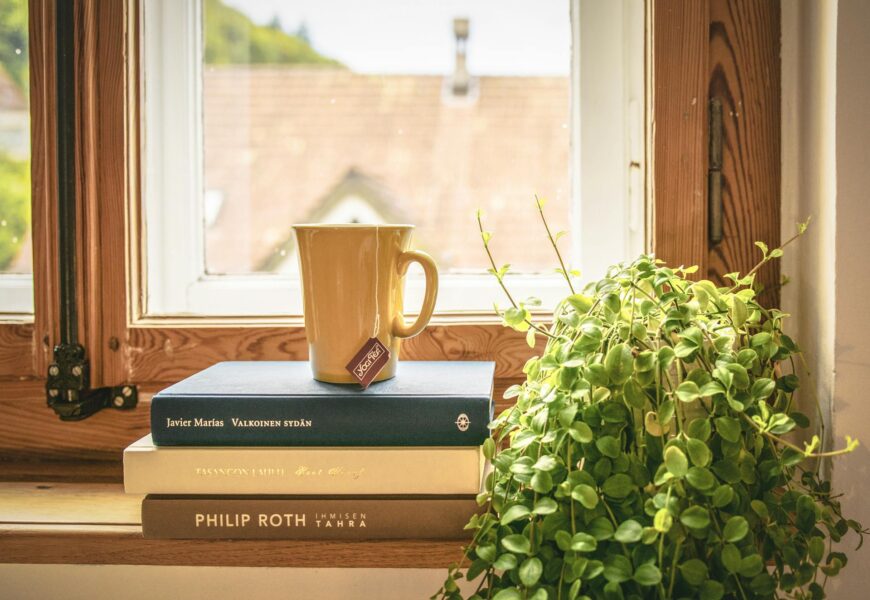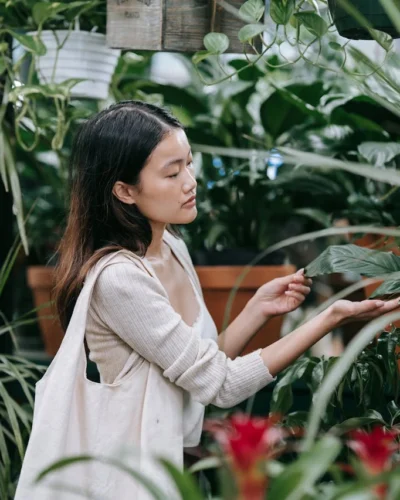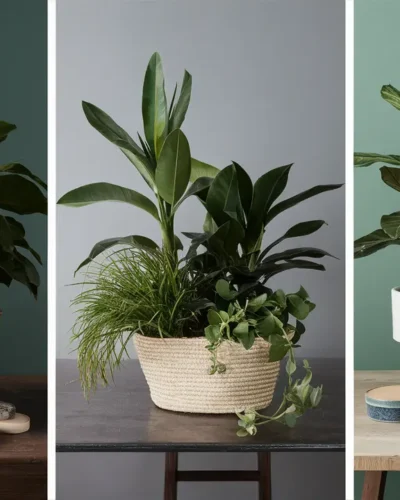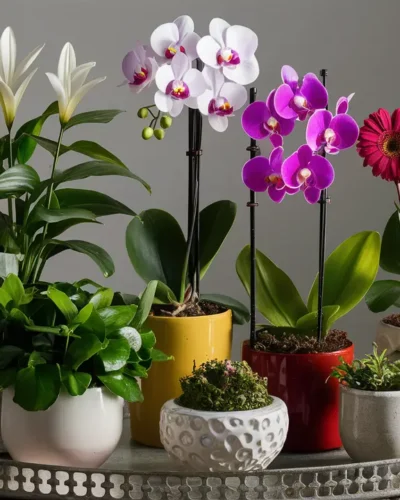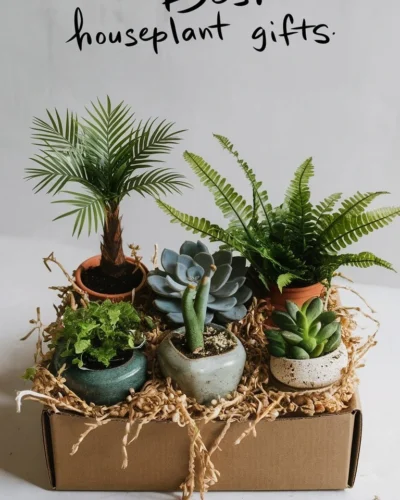Imagine sipping a steaming cup of fragrant tea, knowing you nurtured the leaves yourself! Growing your own herbs for tea is a rewarding and surprisingly simple experience.
This guide takes you from planting seeds to brewing a delicious cup, transforming your indoor herb garden into a personal tea haven.
Table of Content
From Seed to Sip
- Planting Power: Choose your favorite tea herbs like chamomile, mint, or lavender. Start from seeds or seedlings, following basic planting instructions for each variety.
- Indoor Oasis: Provide your herbs with adequate sunlight and water, mimicking their natural growing conditions. With a little energy, you’ll soon have a thriving herb garden at your fingertips.
- Harvesting Joy: Once your herbs are established, snip leaves regularly to encourage fresh growth. Remember, the more you harvest, the more your plants will produce!
Steps To Grow Your Own Indoor Tea
I. Selecting the Right Tea Plants
A. Overview of Popular Tea Plant Varieties Suitable for Indoor Growth
Let’s talk tea! There are a few tea plant varieties that love the cozy indoors. Some popular ones include Camellia sinensis, Camellia sinensis var. assamica, and Camellia sinensis var. cambodiensis. They’re perfect for your indoor garden because they thrive in pots and containers.
B. Factors to Consider When Choosing Tea Plants for Indoor Cultivation
When picking your tea plants, think about your space. Do you have a sunny window? Pick a tea plant that loves sunshine! Also, consider how much space you have. Some tea plants grow taller than others, so make sure you have room to grow.
C. Where to Purchase Tea Plant Seeds or Seedlings
Ready to get started? You can find tea plant seeds or seedlings at garden centers, nurseries, or even online. Look for reputable sellers who offer healthy plants. With a little searching, you’ll be on your way to growing your own tea garden in no time!
II. Setting Up Your Indoor Tea Garden
A. Choosing the Right Containers or Pots
Now that you have your tea plants, it’s time to find them a home. Choose pots or containers that have drainage holes to keep your plants happy. You can get creative with your containers – just make sure they’re the right size for your tea plants to spread their roots.
B. Selecting the Ideal Location with Proper Sunlight and Temperature
Tea plants love sunlight, so find a sunny spot near a window for them to soak up the rays. Keep an eye on the temperature too – tea plants like it warm but not too hot. Aim for temperatures between 65°F to 85°F (18°C to 29°C) to keep your tea plants happy and thriving.
C. Preparing the Soil Mix for Optimal Tea Plant Growth
Tea plants like well-draining soil that’s slightly acidic. You can buy potting soil specifically for acid-loving plants or make your own by mixing peat moss, perlite, and compost. Fill your containers with this mix, and your tea plants will thank you for it!
Sure thing, let’s keep going with the next section:
III. Planting and Caring for Tea Plants
A. Step-by-Step Instructions for Planting Tea Seeds or Seedlings
Now that you have your containers and soil ready, it’s time to plant your tea seeds or seedlings. If you’re starting from seeds, plant them about half an inch deep in the soil and keep them moist. If you have seedlings, gently transplant them into your containers, making sure to cover their roots with soil. Pat them gently, like you’re tucking them in for a cozy nap!
B. Watering and Fertilizing Requirements for Indoor Tea Plants
Tea plants like their soil to be consistently moist but not waterlogged. Water them when the top inch of soil feels dry to the touch. You can use a gentle spray or watering can to keep them hydrated. As for fertilizer, tea plants don’t need much – a diluted liquid fertilizer every few weeks during the growing season will do the trick.
C. Pruning and Maintaining the Health of Your Tea Plants
Think of pruning as giving your tea plants a little haircut. It helps them stay healthy and bushy. Trim away any dead or yellowing leaves, as well as any branches that are growing in the wrong direction. Your tea plants will thank you by growing strong and beautiful leaves!
Of course, let’s proceed with the next section:
IV. Harvesting and Processing Your Homegrown Tea
A. Understanding When Tea Leaves Are Ready for Harvest
It’s time to reap the rewards of your hard work! Tea leaves are ready to be harvested when they’re young and tender. Look for the top two to three leaves and the bud – those are the best for making tea. Wait until your tea plants are about two to three years old before you start harvesting to give them time to grow strong.
B. Techniques for Harvesting Tea Leaves Without Damaging the Plant
Harvesting tea leaves is like picking delicate flowers – you want to be gentle. Use your fingers to pluck the leaves, starting from the top and working your way down. Avoid pulling too hard or damaging the stem. Your tea plants will appreciate the TLC!
C. Basic Methods for Processing and Drying Tea Leaves at Home
Once you’ve harvested your tea leaves, it’s time to turn them into delicious tea. Spread them out on a clean surface and let them dry in a cool, well-ventilated area for a day or two. You can also use a dehydrator or oven on a low setting to speed up the process. Once they’re dry, store them in an airtight container until you’re ready to brew a cup of your homemade tea!
Brewing Bliss
Leaf to Liquid
Once you’ve gathered your fresh herbs, it’s time to brew! Simply steep your chosen leaves in hot water for a few minutes, allowing the flavors to infuse. Experiment with different combinations to create unique tea blends.
Freshness First
Freshly harvested herbs offer the most potent flavors and aromas. Enjoy the difference of homegrown tea compared to store-bought varieties!
Beyond the Basics
Explore adding spices like ginger or citrus peels for an extra flavor kick. You can even experiment with a touch of honey for a naturally sweet sip.
Bonus Tip: Dry your excess herbs to enjoy homemade tea throughout the year. Hang them upside down in a cool, dark place for a few weeks until completely dry.
Growing your own herbs for tea is a delightful way to connect with nature and enjoy the fruits (or should we say leaves?) of your labor.
From the satisfaction of nurturing your plants to the joy of brewing a cup of fresh, flavorful tea, this experience offers a taste of homegrown happiness.
Ready to embark on your garden-to-cup journey? Share your favorite tea herb varieties and brewing tips in the comments below!
Let’s create a community of homegrown tea enthusiasts.

